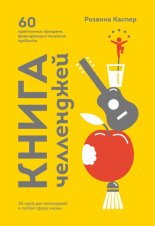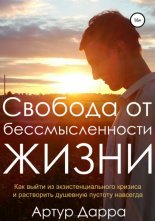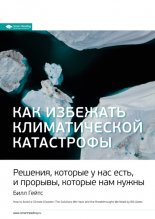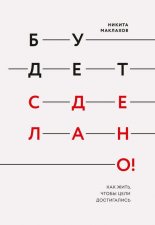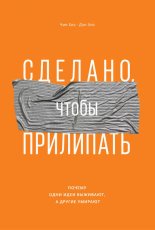На пике. Как поддерживать максимальную эффективность без выгорания Сталберг Брэд

Daniel Hamermesh и Elena Stancanelli, “Americans Work Too Long (and Too Often at Strange Times),” Vox, 29 сентября 2014, http://voxeu.org/article/americans-work-long-and-strange-times.
Project: Time Off, The Hidden Costs of Unused Leave, https://www.projecttimeoff.com/sites/default/files/PTO_HiddenCosts_Report.pdf (дата обращения: 17.11.2015).
Lydia Saad, “The ’40-Hour” Workweek is Actually Longer — be Seven Hours,” Gallup, 29 августа 2014, http://www.gallup.com/poll/175286/hour-workweek-actually-longer-seven-hours.aspx.
Staples Business Advantage, 2015 Workplace Index, http://go.staplesadvantage.com/workplaceindex (дата обращения: 17.11.2015).
Ben Moshinsky, “Bank of America Intern’s 5 a.m. E-Mail Before Death Worried Mom,” Bloomberg, 22 ноября 2013, https://www.bloomberg.com/news/articles/2013-11-22/bank-of-america-staff-quizzed-as-coroner-probes-intern-s-death.
Jacki Wattles, “Burnout Harms Workers’ Physical Health Though Many Pathways,” Monitor on Psychology 37, no. 6 (июнь 2006): 11.
Shahm Martini и др., “Burnout Comparision Among Residents in Different Medical Specialties,” Academic Psychiatry 28, no. 3 (сентябрь 2004): 240–242.
Carol Peckham, “Physician Burnout: It Just Keeps Getting Worse,” Medscape, 26 января 2015, http://www.medscape/viewarticle/838437.
Joachim Bauer и др., “Correlation Between Burnout Syndrome and Psychological and Psychosomatic Symptoms Among Teachers,” International Archives of Occupational and Environmental Health 79, no. 3 (март 2006): 199–204.
Ji Hye Yu, Su Jin Chae и Ki Hing Chan, “The Relationship Among Self-Efficacy, Perfectionism, and Academic Burnouts in Medical School Students,” Korean Journal of Medical Studies 28, no. 1 (март 2016): 49–55.
Mark McGuiness, “The Dark Side of Creativity: Burnout,” Lateral Action, http://lateralaction.com/articles/the-dark-side-of-creativity-burnout/ (дата обращения: 17.11.2015).
Simon Kyaga, Creativity and Psychopathology (Стокгольм, Karolinska Institutet, 2014).
Eystein Enosken, “Drop-out Rate and Drop-out Reasons among Promising Norwegian Track and Field Athletes: A 25 Year Study,” Scandinavian Sports Studies Forum, no. 2 (2011): 19–43.
Jeffrey B. Kreher, MD, and Jennifer B. Schwartz, MD, “Overtraining Syndrome,” Sports Health 4, no. 2 (2012): 128–138.
W.P. Morgan и др., “Psychological Characterization of the Elite Female Distance Runner,” International Journal of Sports Medicine 8, no. S2 (1987): 124–131.
John Raglin и др., “Training Practices and Staleness in 13–18-Year-Old Swimmers: A Cross-cultural Study,” Pediatric Exercise Science, no. 12 (2000): 61–70.
Matt Fitzgerald, “Deena Kastor’s Comfort Zone,” competitor.com, 2 ноября 2009, http://running.competitor.com/2009/11/training/deena-kastors-comfort-zone_6616.
Stephen Seiler, “What is Best Practice for Training Intensity and Duration Distribution in Endurance Athletes?” International Journal of Sports Physiology and Performance, no. 5 (2010): 276–291.
Mihaly Csikszentmihalyi, Creativity: The Psychology of Discovery and Invention (New York: HarperCollins Publishers, 1996): 21–127.
Roy F. Baumeister и др., “Ego Depletion: Is the Active Self a Limited Resource?” Journal of Personality and Social Psychology 74, no. 5 (1998): 1252–1265.
Mark Muraven и др., “Self-Control as Limited Resource. Regulatory Depletion Problems,” Journal of Personality and Social Psychology 74, no. 3: 774–789.
Dylan D. Wagner и др., “Self-Regulatory Depletion Enhances Neural Responses to Rewards and Impairs Top-Down Control,” Psychological Science 24, no. 11 (ноябрь 2013): 2262–2271.
Malte Friese и др., “Suppressing Emotions Impairs Subsequent Stroop Performance and Reduces Prefrontal Brain Activation,” PLoS ONE 8, no. 4 (апрель 2013): e60385.
Michael Inzlicht и Jennifer N. Gutsell, “Running on Empty: Neural Signals for Self-Control Failure,” Psychological Science 18, no. 11 (2007): 933–937.
Kelly McGonigal, PhD, The Willpower Instinct: How Self-Control Works, Why It Matters, and What You Can Do to Get More of It (New York: Avery, 2012), 55–81.
Josh Waitzkin, The Art of Learning: An Inner Journey to Optimal Performance (New York: Free Press, 2007), 181–182.
David G. Myers, Psychology, 6th ed. (Michigan: Worth Publishers, 2001), 604.
Manu Kapur, “Productive Failure in Learning the Concept of Variance,” Instructional Science 40, no. 4 (июль 2012): 651–672.
Kurt Vanlehn и др., “Why Do Only Some Events Cause learning During Human Tutoring?” Cognition and Instruction 21, no. 3 (2003): 209–249.
Daniel Kahneman, Thinking, Fast and Slow (New York: Farrar, Straus and Giroux, 2011), 3–31.
Ian A. McKenzie и др., “Motor Skill Learning Requires Active Central Myelination,” Science 346. no. 6207 (17 октября 2014): 318–322.
Frederick Reif и Sue Allen, “Cognition for Interpreting Scientific Concepts: A Study of Acceleration,” Cognition and Instruction 9, no. 1 (1962): 1–44.
K. Anders Ericsson, “Deliberate Practice and the Acquisition and Maintenance of Expel Performance Medicine and Related Domains,” Academic Medicine 79, no. S10 (октябрь 2004): S70–81.
Robyn M. Dawes, House of Cards: Psychology and Psychotherapy Built on Myth (New York: Free Press, 1994), 55–56.
Richard Gawel, “The Use of Language by Trained and Untrained Experienced Wine Tasters,” Journal of Sensory Studies 12, no. 4 (декабрь 1997): 267–284; D. Valentin и др., “What’s in a Wine Name? When and Why Do Wine Experts Perform Better than Novices?” Abstracts of the Psychonomic Society 5 (2000): 36.
K. Anders Ericsson, Ralf Th. Krampe, and Clemens Tesch-Romer. “The Role of Deliberate Practice in the Acquisition of Expert Performance,” Psychological Review 100, no. 3 (1993): 363–406.
К. Anders Ericsson, “The influence of Experience and Deliberate Practice on the Development of Superior Expert Performance” / The Cambridge Handbook of Expertise and Expert Performance, под ред. K. Anders Ericsson и др. (New York: Cambridge University Press, 2006), 685–706.
K. Anders Ericsson, “The Acquisition of Expert Performance: An Introduction to Some of the Issues” in The Road to Excellence: The Acquisition of Expert Performance in the Arts and Sciences, Sports, and Games, под ред. K. Anders Ericsson (Mahwah, Nj: Lawrence Erlbaum Associates, Inc., Publishers, 1996), 1–50; K. Anders Ericsson and A.C. Lehmann, “Expert and Exceptional Performance: Evidence of Maximal Adaption to Task Constraints,” Annual Review of Psychology 47 (1996): 273–305.
Christina Grape и др., “Does Singing Promote Well-Being? An Empirical Study of Professional and Amateur Singers During a Singing Lesson,” Integrative Physiological & Behavioral Science 38, no. 1 (январь 2002): 65–74.
J.M. Watson and D.L. Strayer, “Supertaskers: Profiles in Extraordinary Multitasking Ability,” Psychonomic Bulletin & Review 17, no. 4 (August 2010): 479–485.
Gisela Telis, “Multitasking Splits the Brain,” Science, 15 апреля 2010, http://www.sciencemag.org/news/2010/04/mullitasking-splits-brain.
Joshua S. Rubinstein, David E. Meyer, and Jeffrey E. Evans, “Executive Control of Cognitive Processes in Task Switching,” Journal of Experimental Psychology: Human Perception and Performance 27, no. 4 (2001): 763–797.
“Injury Prevention & Control: Motor Vehicle Safety,” Centers for Disease Control and Prevention, http://www.cdc.gov/motorvehiclesafety/distracted_driving/ (дата обращения: 07.03.2016).
Patrick Anselme и Mike J.F. Robinson, “What Motivates Gambling Behavior? Insight into Dopamine’s Role,” Frontiers in Behavioral Neuroscience 7 (2013): 182.
Michelle Drouin, Daren H. Kaiser и Daniel A. Miller, “Phantom Vibrations among Undergraduates: Prevalence and Associated Psychological Characteristics,” Computers in Human Behavior 28, no. 4 (июль 2012): 1490–1496.
Justin Worland, “How Your Cell Phone Distracts You Even When You’re Not Using It,” Time, 4 декабря 2014, http://time.com/3616383/cell-phone-distraction/.
Walter Mischel, The Marshmallow Test: Mastering Self-Control (New York: Little, Brown and Company, 2014): 233–273.
K. Anders Ericsson, “The Path to Expert Golf Performance: Insights from the Masters on How to Improve Performance by Deliberate Practice” in Optimising Performance in Golf, под ред. Patrick R. Thomas (Brisbane, Australia: Australian Academic Press, 200), 1–57; K. Anders Ericsson, “Development of Elite Performance and Deliberate Practice: An Update From the Perspective of the Expert Performance Approach” in Expert Performance in Sports: Advances in Research on Sport Expertise, под ред. Janet L. Starkes and К. Anders Ericsson (Champaign, IL: Human Kinetics, 2003), 49–81.
Julio Gifford, “The Secret of the 10% Most Productive People? Breaking!” DeskTime, 20 августа 2014, http://blog.desktime.com/2014/08/20/the-secret-of-the-10-most-productive-people-breaking/.
Awwad J. Dababneh, Naomi Swanson и Richard L. Shell, “Impact of Added Rest Breaks on the Productivity and Well Being of Workers,” Ergonomics 44, no. 2 (2001): 164–174.
P.S. Tiwari and L.P. Gite, “Evaluation of Work-Rest Schedules During Operation of a Rotary Power Tiller,” International Journal of Industrial Ergonomics 36, no. 3 (март 2006): 203–210.
Wolfram Boucsein и Michael Thum, “Design of Work/Rest Schedules for Computer Work Based on Psychophysiological Recovery Measures,” International Journal of Industrial Ergonomics 20, no. 1 (июль 1997): 51–57.
Troci L. Galinsky и др., “A Field Study of Supplementary Rest Breaks for Data-Entry Operators,” Ergonomics 43, no. 5 (2000): 622–638.
A.J. Crum и др., “Mind Over Milkshakes: Mindsets, Not Just Nutrients, Determine Ghrelin Response,” Health Psychology 30, no. 4 (июль 2011): 424–429.
Lisa S. Blackwell, Kali H. Trzesniewski и Carol Sorich Dweck, “Implicit Theories of Intelligence Predict Achievement Across an Adolescent Transition: A Longitudinal Study and an Intervention,” Child Development 78, no. 1 (январь/февраль 2007): 246–263.
Abiola Keller и др., “Does the Perception that Stress Affects Health Matter? The Association with Health and Mortality,” Healthy Psychology 31, no. 5 (сентябрь 2012): 677–684.
Lee J. Moore и др., “The effect of challenge and threat states on performance: An examination or potential mechanisms,” Psychophysiology 49, no. 10 (октябрь 2012): 1417–1425.
Alia K. Crum, Peter Salovey и Shawn Achor, “Rethinking Stress: The Role of Mindsets in Determining the Stress Response,” Journal of Personality and Social Psychology 104, no. 4 (апрель 2013): 716–733.
Graham Jones, Sheldon Hanton и Austin Swain, “Intensity and Interpretation of Anxiety Symptoms in Elite and Non-Elite Sports Performers,” Personality and Individual Differences 17 no. 5 (ноябрь 1994): 657–663.
Brad Stulberg, “Should I Give Whitewater Kayaking a Try?” Outside, 9 ноября 2015, https://www.outsideonline.com/2034356/should-i-give-whitewater-kayaking-try.
Sara W. Lazar и др., “Meditation Experience is Associated with Increased Cortical Thickness,” Neuroreport 16, no. 17 (28 ноября 2005): 693–1897.
Amy F.T. Arnsten, “Stress Signalling Pathways that Impair Prefrontal Cortex Structure and Function,” Nature Reviews Neuroscience 10, no. 6 (июнь 2009): 410–422.
Antoine Lutz и др., “Altered Anterior Insula Activation During Anticipation and Experience of Painful Stimuli in Expert Meditators,” Neuroi 64 (1 января 2013): 538–546.
Stephen Seiler, Olav Haugen и Erin Kuffel, “Autonomic Recovery after Exercise in Trained Athletes: Intensity and Duration Effects,” Medicine & Science in Sports & Exercise 39, no. 8 (август 2007): 1366–1373.
M. Tudor, L. Tudor и K.L. Tudor, “Hans Berger (1873–1941) — The History of Electroencephalography,” Acta Medica Croatia 59, no. 4 (2005): 307–313.
Susan Whitfield-Gabrieli и Judith M. Ford, “Default Mode Network Activity and Connectivity in Psychopathology,” Annual Review of Clinical Psychology 8 (апрель 2012): 49–76.
Marcus E. Raichfe и др., “A Default Mode of Brain Function,” Proceeding of the National Academy of Sciences of the United States of America 98, no. 2 (16 января 2001): 676–682.
Mason Currey, Daily Rituals: How Artists Work (New York: Knopf, 2013), 120–121.
Frank Stewart, A Natural History of Nature Writing (Island Press, 1994), 4.
Jonathon Smallwood и Jonathan W. Schooler, “The Science of Mind Wandering: Empirically Navigating the Stream of Consciousness,” Annual Review of Psychology 66 (январь 2005): 487–518.
Simone M. Ritter и Ap Dijksterhuis, “Creativity — The Unconscious Foundations of the Incubation Period,” Frontiers in Human Neuroscience 8 (2014): 215.
Shantanu P. Jadhav и др., “Awake Hippocampal Sharp-Wave Ripples Support Spatial Memory,” Science 336, no. 6087 (15 июня 2012): 1454–1458.
Steven Pressfield, The War of Art: Winning the Inner Creative Battle (New York: Rugged Land, LLC, 2002), 125.
Marily Oppezzo и Daniel L. Schwartz, “Give Your Ideas Some Legs: The Positive Effect of Walking on Creative Thinking,” Journal of Experimental Psychology: Learning, Memory and Cognition 40, no. 4 (2014): 1142–1152.
Petti Neighmond, “Walking 2 Minutes an Hour Boosts Health, But It’s No Panacea,” NPR, 1 мая 2015, http://www.npr.org/sections/health-shots/2015/05/01/403523463/two-minutes-of-walking-an-hour-boosts-health-but-its-no-panacea; Srinivasar Beddhu и др., “Light-Intensity Physical Activities and Mortality in the United States General Population and CKD Subpopulation,” Clinical Journal of the American Society of Nephrology 10 (июль 2015): 1–9.
Marc G. Berman, John Jonides и Stephen Kaplan, “The Cognitive Benefits of Interacting with Nature,” Psychological Science 19, no. 12 (2008): 1207–1212.
J.E. Stellar, “Positive Affect and Markers of Inflammation: Discrete Positive Emotions Predict Lower Levels of Inflammatory Cytokines,” Emotion 15, no. 2 (апрель 2015): 129–133.
Lorenzo S. Colzato и др., “Prior Meditation Practice Modulates Performance and Strategy Use in Convergent- and Divergent-Thinking Problems,” Mindfulness (2014): 1–7.
C.J. Cook и B.T. Crewther, “The Social Environment During a Post-Match Video Presentation Affects the Hormonal Responses and Playing Performance in Professional Male Athletes,” Physiology & Behavior 130 (10 мая 2014): 170–175.
Brad Stulberg, “Use Year Mind to Restore Your Body After a Run,” Runner’s World, 28 июня 2016, http://www.runnersworld.com/recovery/useyour-mind-to-restore-your-body-after-a-run.
Jeffrey M. Jones, “In U.S., 40% Get Less than Recommended Amount of Sleep,” Callup, 19 декабря 2013, http://www.gallup.com/poll/166553/less-recommended-amount-sleep.aspx.
Maria Konnikova, “Why Can’t We Fall Asleep?,” The New Yorker, 7 июля 2015, http://www.newyorker.com/science/maria-konnikova/why-cant-we-fall-asleep.
Anne-Marie Chong и др., “Evening Use of Light-Emitting eReaders Negatively Affects Sleep, Circadian Timing, and Next-Morning Alertness,” Proceeding of the National Academy of Sciences of the United States of America 112, no. 4 (27 января 2015): 1232–1237.
Maria Konnikova, “The Work We Do While We Sleep,” The New Yorker, 8 июля 2015, http://www.newyorker.com/science/maria-konnikova/why-we-sleep.
Erin J. Wamsley, PhD и Robert Stickgold, PhD, “Memory, Sleep and Dreaming: Experiencing Consolidation,” Sleep Medicine Clinics 6, no 1 (март 2011): 97–108.
S. Groch и др., “The Role of REM Sleep in the Processing of Emotional Memories: Evidence from Behavior and Event-Related Potentials,” Neurobiology of learning and Memory 99 (январь 2013): 1–9.
Matthew P. Walker & Els van der Helm, “Overnight Therapy? The Role of Sleep in Emotional Brain Processing,” Psychological Bulletin 135, no. 5 (сентябрь 2009): 731–748.
June J. Pilcher и др., “Interactions Between Sleep Habits and Self-Control,” Frontiers in Human Neuroscience (11 мая 2015).
Gary Wittert, “The Relationship Between Sleep Disorders and Testosterone in Men,” Asian Journal of Andrology 16, no. 2 (март — апрель 2014): 262–265.
P.T. Res, “Protein Ingestion Before Sleep Improves Postexercise Overnight Recovery,” Medicine & Science in Sports & Exercise 44, no. 8 (август 2012): 1560–1569.
Cheri D. Mah и др., “The Effects of Sleep Extension on the Athletic Performance of Collegiate Basketball Players,” Sleep 34, no. 7 (1 июля 2011): 943–950.
Kathleen McCann, “Ongoing Study Continues to Show that Extra Sleep Improves Athletic Performance,” American Academy of Sleep Medicine, 4 июня 2008, http://www.aasmnet.org/Articles.aspx?id=954.
Mark R. Rosekind и др., “Alertness Management: Strategic Naps In Operational Settings,” Journal of Sleep Research 4, no. 2 (1995): 62–66.
Michael J. Breus, PhD, “Nap vs. Caffeine vs More Nighttime Sleep?,” Psychology Today, 20 июля 2009, https://www.psychologytoday.com/blog/sleep-newzzz/200907/nap-vs-caffeine-vs-more-nighttime-sleep.
Clifford B. Soper, Thomas C. Chou и Thomas E. Scammell, “The Sleep Switch: Hypothalamic Control of Sleep and Wakefulness,” Trends in Neurosciences 24, no. 12 (1 декабря 2001): 726–731.
“Sleep Hygiene Tips,” Centers for Disease Control and Prevention, 10 декабря 2014, http://www.cdc.gov/sleep/about_sleep/sleep_hygiene.html.
“What is Sleep Hygiene?” National Sleep Foundation, http://sleepfoundation.org/ask-the-expert/sleep-hygiene (дата обращения: 17.11.2015).
“Sleep Hygiene Tips,” American Sleep Association, https://www.sleepassociation.org/patients-general-public/insomnia/sleep-hygiene-tips/ (дата обращения: 17.11.2015).
Scot Cacciola, “The Secret to Running: Not Running,” The Wall Street Journal, 20 сентября 2012, http://www.wsi.com/articles/SB10000872396390444032404578006274010745406.
Carmen Binnewies, Sabine Sonnentag и Eva J. Mojzo, “Daily Performance at Work: Feeling Recovered in the Morning as a Predictor of Day-Level Job Performance,” Journal of Organizational Behavior 30, no. 1 (2009): 67–93.
Carmen Binnewies, Sabine Sonnentag и Eva J. Mojza, “Recovery During the Weekend and Fluctuations in Weekly Job Performance: A Week-Level Study Examining Intra-Individual Relationships,” Journal of Occupational and Organizational Psychology 83, no. 2 (июнь 2010): 419–441.
Jessica de Bloom, How Do Vacations Affect Workers’ Health and Well-Being? (Oisterwijk, Netherlands: Uitgeverij BOXPress, 2012).
Delia Etzion, “Annual Vacation: Duration of Relief from Job Stressors and Burnout,” Anxiety, Stress, & Coping 16, no. 2 (2003): 213–226.
Leslie A. Perlow и Jessica L. Porter, “Making Time Off Predictable — and Required,” Harvard Business Review, октябрь 2009, https://hbr.org/2009/10/making-time-off-predictable-and-required.
Kim Constaninesco, “Olympic Hopeful and Filmmaker Alexis Pappas Churns Miles and Words for the Perfect Mix,” Purpose2Play, 17 декабря 2015, http://purpose2play.com/olympic-hopeful-and-filmmaker-alexi-pappas-churns-miles-and-words-for-the-perfect-mix/.
John Kounious и Mark Beeman, “Aha! The Cognitive Neuroscience of Insight,” Current Directions in Psychological Science 18 (2009): 210–216.
Sheena Lewis, Mira Dontcheva и Elizabeth Gerber, “Affective Computational Priming and Creativity,” CHI 2011 Conference on Human factors in Computing Systems (2011).
Anthony Blanchfield, James Hardy и Samuele Marcora, “Non-Conscious Visual Cues Related to Affect and Action Alter Perception of Effort and Endurance Performance,” Frontiers in Human Neuroscience 8 (11 декабря 2014): 967.
Travis Proulx и Steven J. Heine, “Connections from Kafka: Exposure to Meaning Threats Improves Implicit Learning of on Artificial Grammar,” Psychological Science 20, no. 9 (сентябрь 2009): 1125–1131.
Silvano Zipoli Caiani, “Extending the Notion of Affordance,” Phenomenology and the Cognitive Sciences 13, no. 2 (июнь 2014): 275–293.
Mihaly Csikzenlmihalyi, The Evolving Self. A Psychology for the Third Millennium (New York: HarperCollins Publishers, Inc., 1993), 139–141.
Mason Currey, Daily Rituals: Hew Artists Work (New York: Knopf, 2013), 120–121.
A.M. Graybiel, “Habits, Rituals, and the Evaluative Brain,” Annual Review of Neuroscience 31 (2008): 359–387.
O. Beouchet, ‘Testosterone and Cognitive Function: Current Clinical Evidence of a Relationship,” European Journal of Endocrinology 155, no. 6 (декабрь 2006): 773–781.
Drake Baer, “The Scientific Reason Why Barack Obama and Mark Zuckerberg Wear the Same Outfit Every Day,” Business Insider, 28 апреля 2015, http://www.businessinsider.com/barack-obama-mark-zuckerberg-wear-the-same-outfit-2015-4.
Michael Lewis, “Obama’s Way,” Vanity Fair, октябрь 2012, http://www.vanityfair.com/news/2012/10/michael-lewis-profile-barack-obama.
Neil Vidmar, “The Psychology of Trial Judging,” Current Directions in Psychological Science 20 (2011): 58–62.
Ed Yong, “Justice is Served, But More So After lunch: How Food-Breaks Sway the Decisions of Judges,” Discover, 11 апреля 2011, http://blogs.discovermagazine.com/notrocketscience/2011/04/11/justice-is-served-but-more-so-after-lunch-how-food-breaks-sway-the-decisions-of-judges/#.VplKhvHer40.
Nicholas Bakalar, “Doctors and Decision Fatigue,” New York Times, 27 октября 2014, http://well.blogs.nytimes.com/2014/10/27/doctors-and-decision-fatique/?_r=0.
Kathleen D. Vohs и др., “Making Choices Impairs Subsequent Self-Control: A Limited-Resource Account of Decision Making, Self-Regulation and Active Initiative,” Journal of Personality and Social Psychology 94, no. 5 (2008): 883–898.
Joseph Tzelgov, “Automaticity and Processing Without Awareness,” Psyche 5, no. 3 (апрель 1999).
Till Roenneborg, Internal Time: Chronotypes, Social Jet lag, and Why You’re So Tired (Cologne, Germany: DuMont Buchverlag, 2010).
Brigitte M. Kudielka и др., “Morningness and Eveningness: The Free Cortisol Rise after Awakening in ‘Early Birds’ and ‘Night Owls’”, Biological Psychology 72, no. 2 (май 2006): 141–146.
J.A. Horne & O. Ostberg, “A Self-Assessment Questionnaire to Determine Morningness-Eveningness in Human. Circadian Rhythms,” International Journal of Chronobiology 4, no. 2 (1976): 97–110.
Mareike B. Wieth и Rose T. Zacks, “Time of Day Effects on Problem Solving: When the Non-Optimal is Optimal,” Thinking & Reasoning 17, no. 4 (2011): 387–401.
Scott E. Cornell, Mark Hoekstra и James E. West, “Is Poor Fitness Contagious? Evidence from Randomly Assigned Friends,” Journal of Public Economics 95 (август 2011): 657–663.
Ron Friedman и др., “Motivational Synchronicity: Priming Motivational Orientations with Observations of Others’ Behaviors,” Motivation and Emotion (март 2010): 34–38. doi: 10.1007/s11031-009-9151-3.
Paula M. Niederthal, “Embodying Emotion,” Science 316, no. 5827 (18 мая 2007): 1002–1005.
Philip L. Jackson, Andrew N. Meltzoff и Jean Decety, “How Do We Perceive the Pain of Others? A Window into the Neural Processes involved in Empathy,” Neuroi 24, no. 3 (1 февраля 2005): 771–779.
Emma Seppala, The Happiness Track: How to Apply the Science of Happiness to Accelerate Your Success (New York: HarperCollins Publishers, 2016): 162.
Nicholas A. Christakis, MD, PhD, MPH и James H. Fowler, PhD, “The Spread of Obesity in a large Social Network over 32 Years,” The New England journal of Medicine 357 (2007): 370–379.
Nicholas A. Christakis, MD, PhD, MPH и James H. Fowler, PhD, “Quitting in Droves: Collective Dynamics of Smoking Behavior in a Large Social Network,” The New England Journal of Medicine 358, no. 21 (22 мая 2008): 2249–2258.
James Clear, “What is Actually Required for Success?” James Char (блог), http://jamesclear.com/required-for-success (дата обращения: 13.12.2015).
Jocelyn K. Glei и Scott Belsky. Manage Your Day-to-Day: Build Your Routine, Find Your Focus, and Sharpen Your Mind (Amazon Publishing, 2013), 103.
Alexis Huicochea, “Man Lifts Car Off Pinned Cyclist,” Tuscon.com, 28 июля 2006, http://tuscon.com/news/local/aime/article_e7f04bbd-309b-5c7e-808d-1907d91517ac.html.
Julie Halpert, “On Purpose,” Michigan Today, 5 марта 2014, http://michigantoday.umich.edu/on-purpose/.
T.D. Noakes, “Time to Move Beyond a Brainless Exercise Physiology: The Evidence for Complex Regulation of Human Exercise Performance,” Applied Physiology, Nutrition, and Metabolism 36, no. 1 (февраль 2011): 23–35.
T.D. Noakes, “J.B. Wolffe Memorial Lecture. Challenging beliefs: ex Africa semper aliquid novi,” Medicine & Science in Sports & Exercise 29, no. 5 (май 1997): 571–590.
Brad Stulberg, “What’s the Point?” Blue Ridge Outdoors Magazine, 22 июля 2015, http://www.blueridgeoutdoors.com/go-outside/whats-the-point/.
Emily B. Falk и др., “Self-Affirmation Alters the Brain’s Response to Health Messages and Subsequent Behavior Change,” Proceedings of the National Academy of Sciences of the United States of America 112, no. 7 (17 февраля 2015): 1977–1982.
Stephen E. Humphrey, Jennifer D. Nahrgang и Frederick P. Morgeson, “Integrating Motivational, Social, and Contextual Work Design Features: A Meta-Analytic Summary and Theoretical Extension of the Work Design Literature,” Journal of Applied Psychology 92, no. 5 (сентябрь 2007): 1332–1356.
T.D. Shanafelt и др., “Career Fit and Burnout Among Academic Faculty,” Archives of Internal Medicine 169, no. 10 (25 мая 2009): 990–995.
P.R. Harris и др., “Self-Affirmation Reduces Smokers’ Defensiveness to Graphic On-Pack Cigarette Warning Labels,” Health Psychology 26, no. 4 (июль 2007): 437–446.
A.M. Grant и D.A. Hofmann, “It’s Not All About Me: Motivating Hand Hygiene Among Health Care Professionals by Focusing an Patient,” Psychological Science 22, no. 12 (декабрь 2011): 1494–1499.
Adam Gram, “How Customers Can Rally Your Troops,” Harvard Business Review, июнь 2011, https://hbr.org/2011/06/how-customers-can-rally-your-troops.
Samuele M. Marcora, “Do We Really Need a Central Governor to Explain Brian Regulation of Exercise Performance?,” European Journal of Applied Physiology 104 (2008): 929–931.
Daniel Pink, Drive: The Surprising Truth About What Motivates Us (New York: Riverhead Books, 2012): 145.
David S. Yeager и др., “Boring But Important: A Self-Transcendent Purpose for Learning Fosters Academic Self-Regulation,” Journal of Personality and Social Psychology 107, no. 4 (октябрь 2014): 559–580.
Shelley E. Taylor, “Tend and Befriend Theory,” in Handbook of Theories of Social Psychology, под ред. Paul A.M. van Lange, Arie W. Kruglanski и E. Tory Higgins (London: Sage Publications, 2012).
David Conrad и Yvonne Kellar-Guenther, “Compassion Fatigue, Burnout, and Compassion Satisfaction among Colorado Child Protection Workers,” Child Abuse & Neglect 30, no. 10 (октябрь 2006), 1071–1080.
Adam M. Grant, Give and Take: Why Helping Others Drives Our Success (New York: Viking. 2013), 166.
Brad Stulberg, “The Cure for Fitness Burnout,” Men’s Fitness, 15 октября 2014, https://www.mensfitness.com/training/pro-tips/cure-fitness-burnout.
Anthony Blanchfield, James Hardy и Samuele Marcora, “Non-Conscious Visual Cues Related to Affect and Action Alter Perception of Effort and Endurance Performance,” Frontiers in Human Neuroscience 8 (11 декабря 2014): 967.
Antonis Hatzigeorgiadis, Nikos Zourbanos, Evangelos Galanis и Yannis Theodorakis, “Self-Talk and Sports Performance: A Meta-Analysis,” Perspectives on Psychological Science 6, no. 4 (июль 2011): 348–356.
Благодарности
Эта книга, конечно, появилась благодаря коллективной работе, благодаря команде, состоявшей не только из нас двоих, но и из многих людей, каждый из которых сделал свой уникальный вклад. Если она вам понравилась, пожалуйста, разделите с нами благодарность этим людям. Их вклад — в каждой странице, которую вы только что прочитали.
Во-первых, и прежде всего, мы хотим поблагодарить ядро нашей команды, без которого книга все еще была бы в наших головах, а не на бумаге. Это Кэтлин Сталберг: одному из нас она приходится потрясающей женой и нам обоим — потрясающим редактором. Мы закончили рукопись менее чем за три месяца, и многие спрашивали, как нам удалось так быстро справиться. Ответ — Кэтлин. Кэтлин возвращала нам отредактированные главы быстрее, чем любой профессионал, с которым мы когда-либо работали, и это несмотря на то, что она одновременно продолжала свою адвокатскую деятельность. Каждая страница этой книги стала лучше благодаря ей, и не только благодаря ее бесконечным правкам, но еще в большей степени благодаря ее бесконечной поддержке.
Мы говорим спасибо нашему агенту Теду Вайнштейну, который взялся за двух молодых авторов с небольшим опытом. Тед помог нам сформулировать наше предложение и, таким образом, идею книги. Он — воплощение профессионализма, и работать с ним одно удовольствие, а также, что еще важнее, у него можно многому научиться.
Мы благодарны прекрасной команде Rodale Books, включая Эли Мостель и Энджи Джиаммарино. И, в частности, благодарим нашего редактора Марка Вайнштейна, который поверил в идею книги с самого начала. Марк позволил нам писать то, что мы мечтали написать, и затем сделал написанное лучше. Что еще автор может просить у редактора?
Мы также хотим поблагодарить читателей наших первых набросков, чьи отзывы невероятно улучшили эту книгу. Эти люди потратили свое время и энергию на рукопись, когда она существовала только в виде отдельных документов Word. Каждый из них сделал свой ценный вклад, потратив часы на разговоры по телефону, в Skype и на встречах за кофе. Мы благодарим Сару Баум, Марка Дэвиса, Келли Макумбер, Джонатана Маркуса, Алана Маккейна, Хиллари Монтгомери, Алана Пенскара, Мелиссу Штерн, Эрика Сталберга, Линду Сталберг, Феб Райт и членов команды по бегу по пересеченной местности Хьюстонского университета 2015 года (Калеб Бичем, Никита Прасад, Макензи Илари, Кэм Лаверти, Мария Гонзалез, Рик Хоули, Коди Андерсон, Дженнифер Дунлап, Мэтт Пармли, Джастин Барретт, Гэйб Лара, Брайан Баррац, Мередит Соренсен, Джиджей Рейна и Тревор Уолкер). Особую благодарность приносим Эмили Магнесс, которая продемонстрировала, что она лучший писатель в семье Магнессов. Ее редактура и критика были бесценным дополнением к этой книге.
Было бы грубым упущением не упомянуть наших учителей, которые поощряли нас написать эту книгу и благодаря вкладу которых мы смогли сформулировать наши идеи. Всю жизнь нам везло с учителями, и нам посчастливилось расти в кругу мудрости, доброты и заботы. Приносим особую благодарность Дэвиду Эпштейну, Марио Фрайоли, Верну Гамбетте, Адаму Гранту, Брюсу Грирсону, Алексу Хатчинсону, Майку Джойнеру, Бобу Кохеру и Келли Макгонигал.
Мы также благодарим издания, в которых мы регулярно публикуемся, включая Blue Ridge Outdoors (в частности, редактора Брэда Уилла Харлана), журнал New York (в частности, редактора Брэда Мелиссу Даль), журнал Outside (в частности, Брэд благодарит редактора Эрин Березини, Меган Браун и Уэсли Джадд), Running Times (Стив особенно благодарит редакторов Стива Джонатана Беверли, Скотта Дугласа и Эрин Страут) и Runner’s World (в частности, Брэд благодарен редакторам Кэти Нитц и Меган Кита). Кроме того, мы благодарим журналы Outside, New York и Runner’s World, где в колонках Брэда были впервые опубликованы некоторые из историй и идей этой книги. Это воистину честь — постоянно писать для таких высококлассных изданий.
И конечно, спасибо всем великим мастерам своего дела, чьими историями мы поделились в этой книге. Хотя их слишком много, чтобы упомянуть каждого, мы хотим перечислить тех из них, с кем мы особенно сблизились, пока брали интервью. Эти звезды вышли за пределы простой вежливости, позволив нам заглянуть в их жизнь: Эмиль Альзамора, Мэтт Биллингсли, Мэтт Диксон, Меган Гарнье, Дэвид Госс, Дейв Гамильтон, Майк Джойнер, Боб Кохер, Дженнифер Фарр Дэвис, Брендон Реннелс, Даррен Смит и Вик Стречер.
Наконец, спасибо нашим семьям, которые всегда поддерживали нас, пока мы пытались достичь собственной Высокой Производительности. Без них ничто из этого не стало бы возможным. Кэтлин. Линда и Боб Сталберг. Эрик Сталберг. Луи Сталберг. Боб и Элейн Аппель. Рэнди и Боб Блум. Уильям и Элизабет Магнесс. Филипп и Эмили Магнесс.
Об авторах
Брэд Сталберг пишет о здоровье и науке человеческой производительности. Он колумнист журналов Outside и New York, а также писал для The Forbes, NPR, Los Angeles Times, Runner’s World и The Harvard Public Health Review. Брэд широко известен своим умением объединять данные последних исследований с интересными личными историями, предлагая читателями практические советы, которые они могут применить в своей жизни.
Ранее Брэд работал консультантом в McKinsey & Company, где консультировал некоторых руководителей ведущих мировых компаний по широкому ряду вопросов. Он активный спортсмен и большой любитель прогулок. Брэд живет в Северной Калифорнии с женой Кэтлин и двумя кошками.
Стив Магнесс — тренер некоторых ведущих бегунов мира, он занимался подготовкой многих спортсменов к Олимпийским играм и мировым чемпионатам. В настоящее время ведет тренировки в Хьюстонском университете.
Стив широко известен тем, что объединяет науку и практику. Он лидер инноваций в спорте. Стив работает внештатным преподавателем по силовой и физической подготовке в Университете Святой Марии, а также является экспертом изданий Runner’s World, The New York Times, New Yorker, BBC, Wall Street Journal и ESPN The Magazine. Его первая книга The Science of Running была опубликована в 2014 году. В юности Стив пробежал одну милю за четыре минуты и одну секунду. Живет в Хьюстоне, штат Техас.
Над книгой работали
Главный редактор Артем Степанов
Ответственный редактор Татьяна Рапопорт
Литературный редактор Наталия Рудницкая
Арт-директор Алексей Богомолов
Дизайн Наталия Савиных
Верстка Екатерина Матусовская
Корректоры Лев Зелексон, Олег Пономарев
ООО «Манн, Иванов и Фербер»
mann-ivanov-ferber.ru
Электронная версия книги подготовлена компанией Webkniga.ru, 2018

